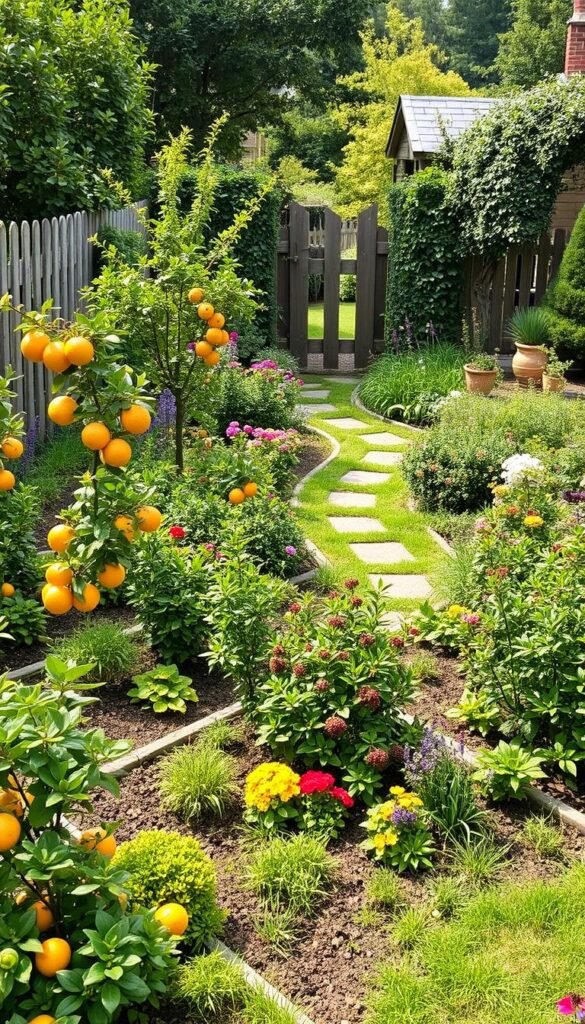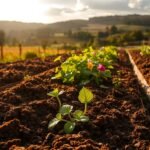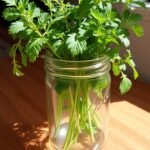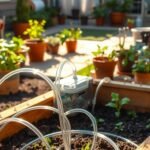Imagine stepping into your backyard and plucking sun-ripened treats from trees that fit perfectly in cozy corners. With thoughtful planning, even tight quarters can become lush, productive spaces bursting with fresh flavors. This guide reveals how to turn underused areas into vibrant growing zones that deliver satisfying results season after season.
You don’t need vast acreage to enjoy homegrown goodness. By selecting dwarf tree varieties and using vertical structures like trellises, you’ll create layers of productivity. Pair these with clever space-sharing techniques, such as interplanting strawberries with blueberries, to multiply your harvests without crowding.
Successful small-scale growing starts with understanding your site’s sunlight patterns and soil needs. Raised beds or container gardens offer precise control over nutrients and drainage, especially valuable in urban settings. For those working with a small backyard space, techniques like square-foot planting grids ensure every inch works efficiently.
We’ll explore seven proven methods that balance beauty and practicality. From training apple trees along fences to using succession planting for continuous yields, these approaches help you avoid common pitfalls while creating an edible oasis. Get ready to rediscover what’s possible when design meets determination!
Understanding Compact Fruit Gardening Principles
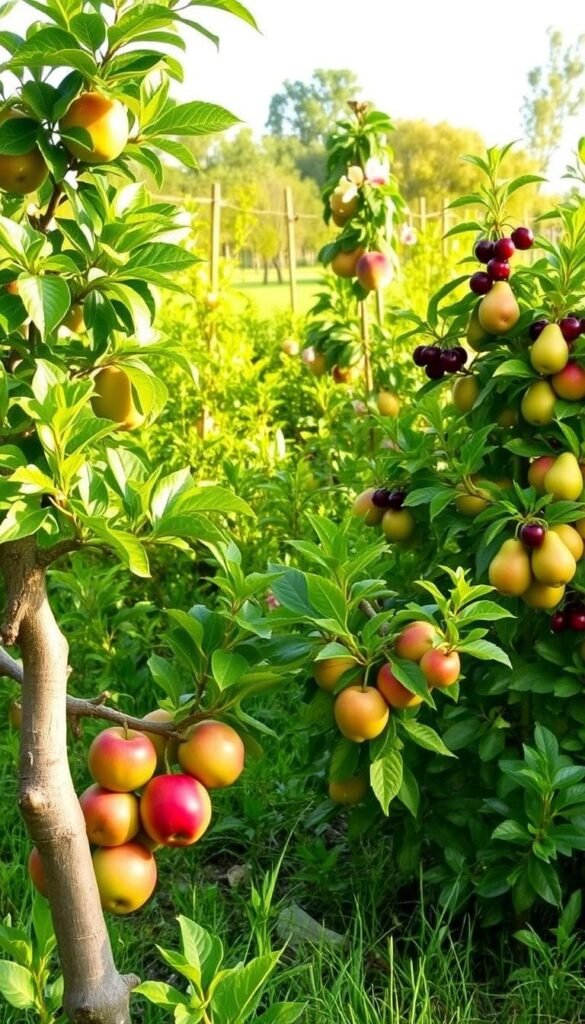
Transforming limited areas into productive zones starts with smart planning. You’ll create thriving green spaces by combining space-smart strategies with specially bred plants. Let’s explore how to make every square foot count.
Assessing Your Available Space
Grab a tape measure and notebook first. Map out your area’s dimensions, noting where shadows fall throughout the day. Buildings and mature trees can block sunlight – mark these on your sketch.
Check soil quality by squeezing a handful. Does it crumble or stay soggy? Proper drainage prevents root rot. Leave room for pathways – you’ll need access for pruning and harvesting.
Selecting Dwarf and Semi-Dwarf Varieties
Miniature marvels like ‘Honeycrisp’ apples pack full flavor into 8-foot frames. These space-saving plants use specialized rootstocks to control size. Compare options:
| Type | Spacing | Height | Yield |
|---|---|---|---|
| Standard Apple | 15-25 ft | 30 ft | 10-20 bushels |
| Semi-Dwarf Apple | 12 ft | 12 ft | 6-8 bushels |
| Dwarf Peach | 6 ft | 5 ft | 3-4 pecks |
Columnar varieties like ‘Scarlet Sentinel’ grow upward instead of outward. Pair different types for extended harvests – try early and late-season berries in the same bed.
Designing Your Layout for Maximum Productivity

Smart spatial arrangements turn cramped quarters into powerhouse producers. The secret lies in combining structured growing systems with materials that work smarter, not harder.
Raised Bed Essentials for Small Spaces
Elevated planters solve multiple challenges at once. They warm up two weeks faster than ground soil in spring, letting you start strawberries earlier. Rot-resistant cedar lasts a decade, while untreated pine offers budget-friendly options.
| Material | Lifespan | Cost | Maintenance |
|---|---|---|---|
| Cedar | 10+ years | $$$ | None |
| Redwood | 10+ years | $$$$ | None |
| Pine | 3-5 years | $ | Annual sealing |
| Metal | 15+ years | $$$$ | Rust prevention |
Keep beds narrow enough to reach the center comfortably. Against walls? Limit width to 30 inches. Freestanding? Four-foot spans let you access from both sides.
Square Foot Efficiency Tactics
This method packs diversity into tight quarters. Divide your planter into 12×12″ grids – one blueberry bush per square, or nine alpine strawberries. Succession planting keeps harvests rolling: replace spent greens with fall raspberries.
Pair these approaches for knockout results. You’ll enjoy earlier harvests, fewer weeds, and back-friendly maintenance – all while squeezing maximum value from every inch.
Fruit Garden Layout Tips: Maximizing Yields in Compact Areas
Unlock hidden potential in your growing area through intelligent layering. Stacking vegetation vertically lets you grow three times more in the same footprint. Start with high-density arrangements that position trees 6-8 feet apart – close enough to boost productivity but far enough to prevent overcrowding.
Create living layers like nature does. Taller trees form the canopy, while blueberries or currants flourish beneath them as mid-level producers. Ground-level herbs like thyme fill gaps, suppressing weeds while attracting pollinators. This approach turns unused vertical spaces into edible zones.
Pair compatible plants to multiply outputs. Basil near peach trees enhances flavor and repels pests. Marigolds circling berry patches deter nibbling animals. These partnerships let your garden work smarter, not harder.
Time your harvests like a pro. Sow fast-growing radishes between young apple saplings – you’ll get crunchy snacks before the trees need more room. Follow strawberries with fall-bearing raspberries to keep baskets full from June through October.
Rotate container positions seasonally. Move potted figs to sunnier spots in spring, then shift them to create shade for cool-weather greens come autumn. This flexibility ensures every inch contributes year-round.
Implementing Smart Irrigation and Soil Management
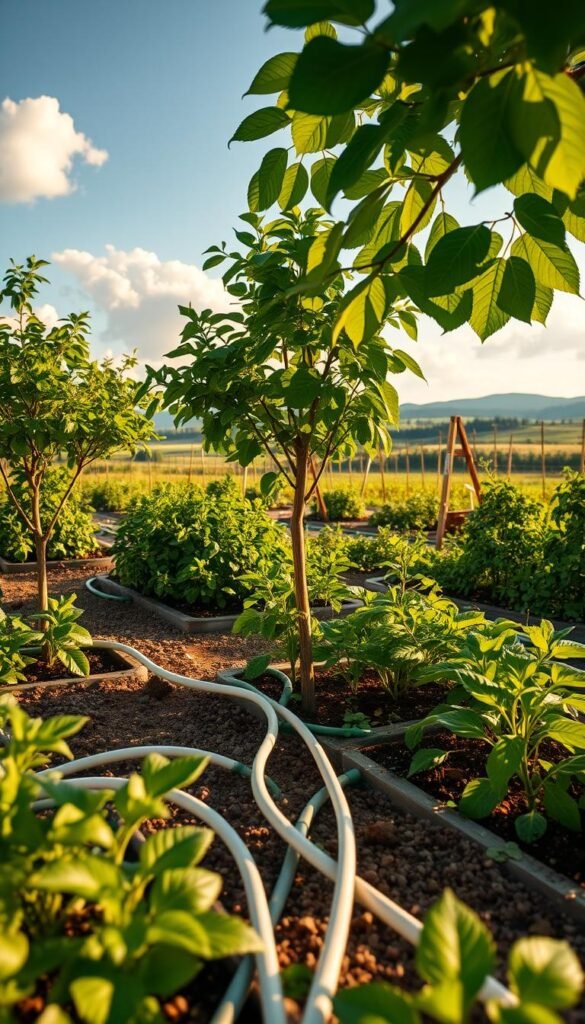
Keep your plants thriving while conserving resources with precision watering methods. Strategic hydration paired with nutrient-rich earth forms the foundation of healthy growth in confined spaces.
Installing Drip Irrigation for Targeted Watering
Swap wasteful sprinklers for tubing that delivers water exactly where roots drink deepest. These systems use 60% less water by avoiding evaporation – a game-changer during summer droughts.
Position emitters 18-24 inches from young tree trunks, adjusting flow rates as plants mature. Start with 1-2 gallons hourly for saplings, increasing to 4-6 gallons for established specimens. This gradual approach prevents soil saturation while encouraging deep root development.
Mulching Techniques and Compost Applications
Blanket your planting zones with 3-4 inches of wood chips, leaving a 3-inch buffer around tree bases. This organic armor locks in moisture for seven days between watering sessions and chokes out weed competition.
Boost your soil structure by layering compost beneath mulch. As these materials break down, they release nutrients slowly – like a time-release vitamin for your plants. This dynamic duo reduces maintenance while creating ideal growing conditions.
Pair these strategies to build self-sustaining ecosystems. You’ll spend less time hauling hoses and more time enjoying juicy harvests from your efficiently managed oasis.
Vertical Gardening and High-Density Planting Techniques
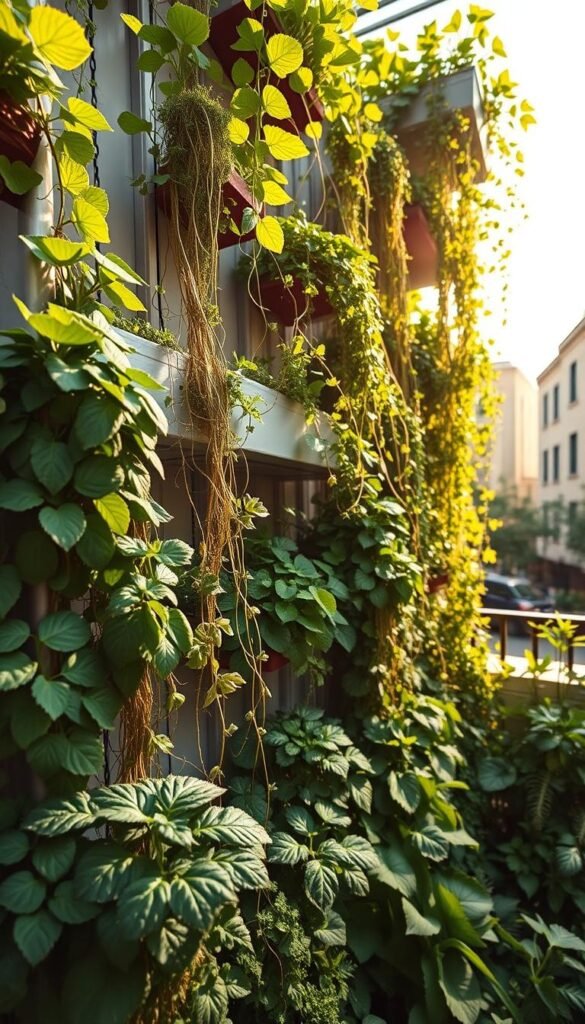
Elevate your harvest potential by growing upward, not outward. Vertical methods let you pack more plants into tight spaces while creating eye-catching displays. These strategies work wonders for urban balconies, narrow side yards, or even patio corners.
Using Espalier and Trellising Systems
Turn blank walls into edible art with espalier training. Start with young apple or pear trees, bending their branches along horizontal wires spaced 18-24 inches apart. This method exposes all plant surfaces to sunlight, boosting fruit production in half the ground space.
Wire systems aren’t just for trees. Grapes and kiwiberries thrive on vertical trellises, yielding 15-20 pounds per vine. Position these climbers where they’ll get 6+ hours of sun – against fences or between raised beds.
Optimizing Tree Spacing for Healthy Growth
Dwarf varieties need just 6-8 feet between trunks – perfect for fitting multiple types in narrow strips. Leave 3-4 feet between vertical containers to prevent overcrowding. This spacing lets roots breathe while allowing easy access for pruning.
Integrating Vertical Containers and Climbing Plants
Stackable planters let you grow strawberries above dwarf blueberries, tripling yields in 2 square feet. Pair these with space-efficient planting strategies like intercropping herbs beneath climbing beans. The result? A lush, multi-level food factory.
Choose lightweight containers with built-in trellises for peas or passionfruit. These systems prevent soil compaction and make seasonal rotations a breeze. You’ll enjoy fresh snacks from ground level to eye height all season long.
Advanced Strategies for Space-Saving Garden Design
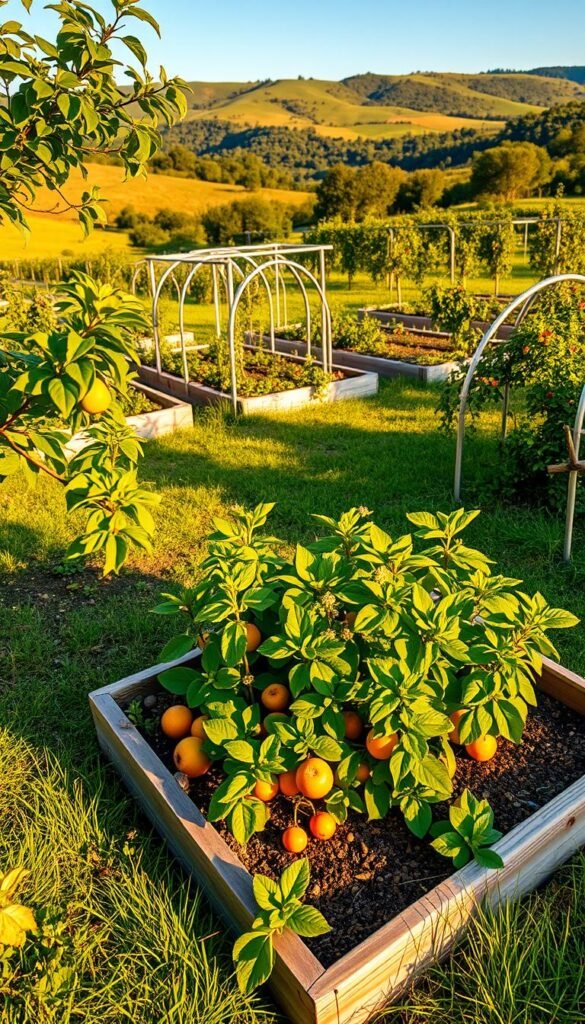
Transform your patch into a perpetual snack bar through clever timing and placement. Smart scheduling lets you enjoy fresh flavors across three seasons without overwhelming your space.
Planning for Continuous, Year-Round Harvests
Start by mixing early, mid, and late-season producers. Try ‘Black Tartarian’ cherries for June treats, followed by ‘Gala’ apples in August, and wrap up with persimmons in October. This staggered approach keeps baskets full without overcrowding.
Use your property’s microclimates strategically. South-facing walls act like nature’s incubators – they bake warmth into figs and peaches, speeding ripening. Cool north sides become perfect homes for later bloomers like Asian pears that need delayed starts.
Slot quick-growing greens between young trees. Spinach and radishes mature before saplings need more room. When autumn arrives, replace spent veggies with kale that thrives under dappled tree shade.
Extend your season with simple protections. Floating row covers shield late berries from early frosts, adding 3-4 weeks of picking time. Pair these with compact greenhouse kits for citrus in chilly zones.
Remember: Preserve smarter, not harder. Choose fruits that ripen when you’re ready to process them – late apples store well, while summer raspberries beg for immediate eating. Your planning today builds tomorrow’s effortless abundance.
Wrap Up: Bringing Your Compact Orchard to Life
Your journey to a thriving edible oasis starts with applying these smart strategies. By combining vertical structures with raised beds, you’ll squeeze more value from every square foot. Remember – success grows from healthy soil and thoughtful placement.
Rotate plants seasonally to keep harvests rolling. Use compost to feed roots while suppressing weeds naturally. Those sunny corners? Perfect for stacking strawberry towers or dwarf citrus trees.
Stay flexible as your space evolves. Swap out crops that underperform and double down on what thrives. With proper watering and pest management, even a postage-stamp yard becomes a reliable food source.
Now’s the time to put plans into action. Grab those gloves, prep your tools, and watch your compact paradise flourish. Those juicy rewards? They’re closer than you think!
